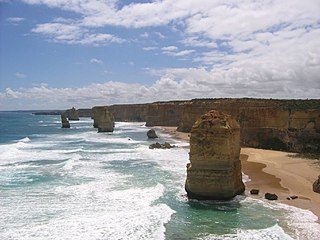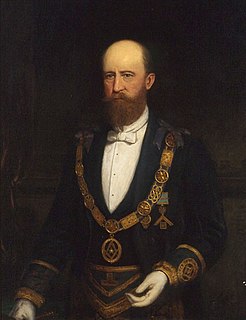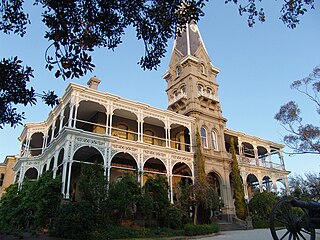
Geelong is a port city located on Corio Bay and the Barwon River, in the state of Victoria, Australia. Geelong is 75 kilometres (47 mi) south-west of the state capital, Melbourne. It is the second largest Victorian city, with an estimated urban population of 268,277 as of June 2018. Geelong runs from the plains of Lara in the north to the rolling hills of Waurn Ponds to the south, with Corio Bay to the east and hills to the west. Geelong is the administrative centre for the City of Greater Geelong municipality, which covers urban, rural and coastal areas surrounding the city, including the Bellarine Peninsula.

Queenscliff is a small town on the Bellarine Peninsula in southern Victoria, Australia, south of Swan Bay at the entrance to Port Phillip. It is the administrative centre for the Borough of Queenscliffe. At the 2016 census, Queenscliff had a population of 1,315.
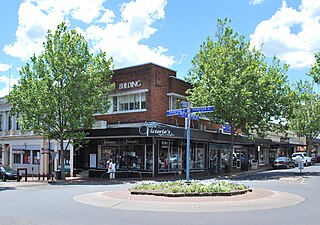
Hamilton is a large town in south-western Victoria, Australia, at the intersection of the Glenelg Highway and the Henty Highway. The Hamilton Highway connects it to Geelong.
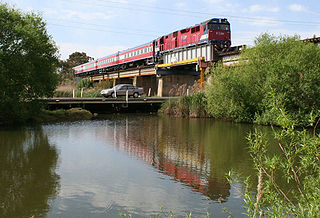
Breakwater is a residential and industrial suburb of Geelong, Victoria, Australia, located on the Barwon River, 4 km south-south-east of the Geelong central business district. At the 2016 Census Breakwater had a population of 1,014. Breakwater is home to the Geelong Racing Club, Geelong Racecourse and the Geelong Showgrounds.
Manifold Heights is a residential suburb of Geelong. At the 2016 census, Manifold Heights had a population of 2,649.
Newtown is an inner western suburb of Geelong, Victoria, Australia. At the 2016 census, Newtown had a population of 10,155. It is a primarily residential area occupying one of the highest points of urban Geelong, has always been a desirable place of residence and it is the location of many of Geelong's oldest and most valuable properties.
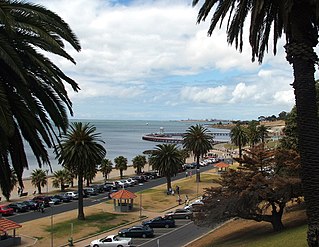
Eastern Beach is a popular swimming and recreation area in Geelong, Victoria on the shores of Corio Bay. Built during the 1930s in the Art Deco style, a shark proof sea bath is provided, as well as a children's swimming pool, kiosk, and dressing room pavilion. A number of Art Deco buildings in the area are listed on the Victorian Heritage Register.
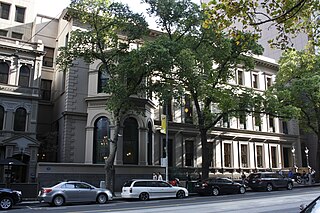
The Melbourne Club is a private social club established in 1838 and located at 36 Collins Street, Melbourne; adjacent to the Lyceum Club, which is located in Ridgway Place, Melbourne.

Westfield Geelong is a shopping centre located in the Geelong CBD in Victoria, Australia which was opened in 1988. It was formerly known as Westfield Bay City before the 2008 redevelopment, and as Bay City Plaza before being acquired by the Westfield Group in 2003. The centre is located on the northern side of Malop Street opposite the Market Square shopping complex, and is bounded by Moorabool Street, Yarra Street, Malop Street and Brougham Street. The centre has completed its major redevelopment, including the expansion over Yarra Street via a flyover.

A coffee palace was an often large and elaborate residential hotel that did not serve alcohol, most of which were built in Australia in the late 19th century. 'Temperance hotels' were first established in the UK in the 1850s to provide an alcohol-free alternative to corner pubs and residential hotels, and by the 1870s they could be found in every town and city, some quite large and elaborate. In the late 1870s the idea caught on in Australia, where the appellation 'coffee palace' was almost universal, and dozens were built in the 1880s and early 1890s, including some of the largest hotels in the country. Due to the depression of the mid 1890s, some became ordinary hotels and others were converted to different uses, and some eventually demolished. The name continued to be applied to smaller residential hotels and guest houses in the early 20th century, until the trend died out.

Johnstone Park is a landscaped garden in Geelong, Victoria, Australia. It is bounded by Railway Terrace, Gheringhap Street, Little Malop Street, Fenwick Street, and Mercer Street. The park is surrounded by civic buildings including the Geelong Town Hall, Geelong Art Gallery, Geelong Library, Geelong Law Courts, and the Geelong Railway Station. A war memorial and bandstand feature in the centre of the park.

The City of Geelong West was a local government area about 5 kilometres (3 mi) west of the regional city of Geelong, Victoria, Australia. The city covered an area of 5.26 square kilometres (2.0 sq mi), and existed from 1875 until 1993.
Robert Guyon Whittlesey Purchas was an Australian architect, especially noted as a pioneer of the Arts & Crafts style seen in a number of large residential projects in the late 1890s and early 1900s. He was the son of prominent architect, civil engineer, and surveyor, Albert Purchas.

The Geelong Library and Heritage Centre is a regional library, archive and resource facility in the city of Geelong, Victoria, Australia. Geelong Free Library was begun in 1858. The Geelong Historical Records Centre was established in 1979 as a depository for significant historical records and archives from the district. The centre is a Place of Deposit, as part of the Public Record Office Victoria network of community archives designated for the preservation of Victoria's history. It is described as ...the largest regional archive in Victoria.
The National Wool Museum tells the timeless Australian story of wool, fibre and textiles, alongside a range of contemporary exhibitions, public programs and special events.
Dennys, Lascelles Ltd was a major agricultural firm based in Geelong, Australia.
One of the first big businesses that developed in the new colony of Australia was the wool industry. It had an important impact on the development of Geelong as the centre of wool sales and exports. Geelong's location and the ambition of local merchants made it perfect for shipping Australian wool worldwide. As the industry boomed, throughout Geelong large storehouses were built for the storage, assessment, sale and transport of wool bales from throughout Victoria and even further.

New South Wales Club building is a heritage-listed former clubhouse and now offices located at 31 Bligh Street, in the Sydney central business district, in the City of Sydney local government area of New South Wales, Australia. It was designed by William Wardell and built from 1886 to 1887 by John Try. It housed the New South Wales Club from 1886 until the club's amalgamation with the Australian Club in 1969. It was then sold and the two rear wings demolished in 1973 before the surviving front portion was converted to offices. It was added to the New South Wales State Heritage Register on 2 April 1999.
